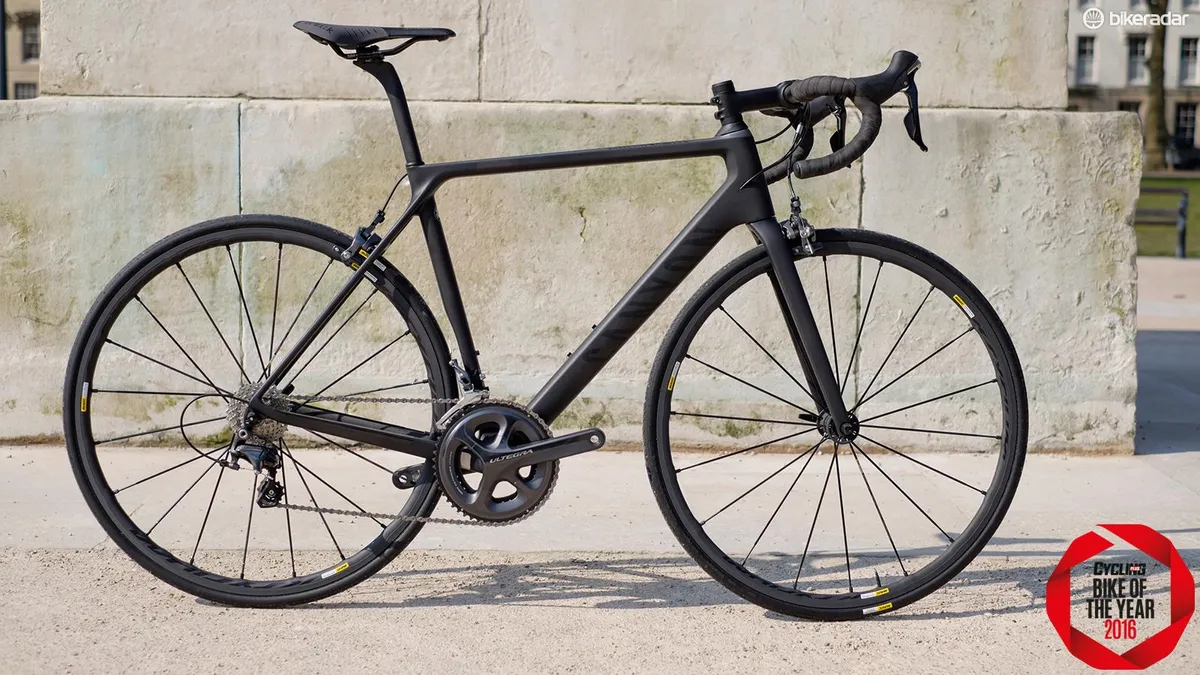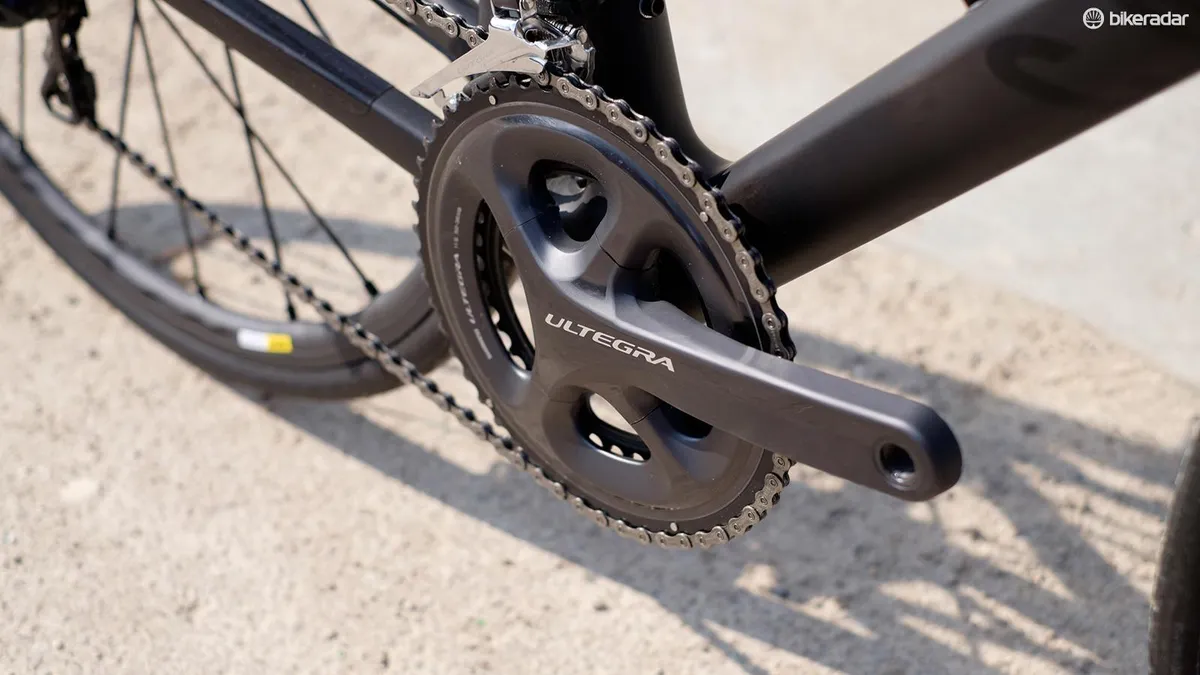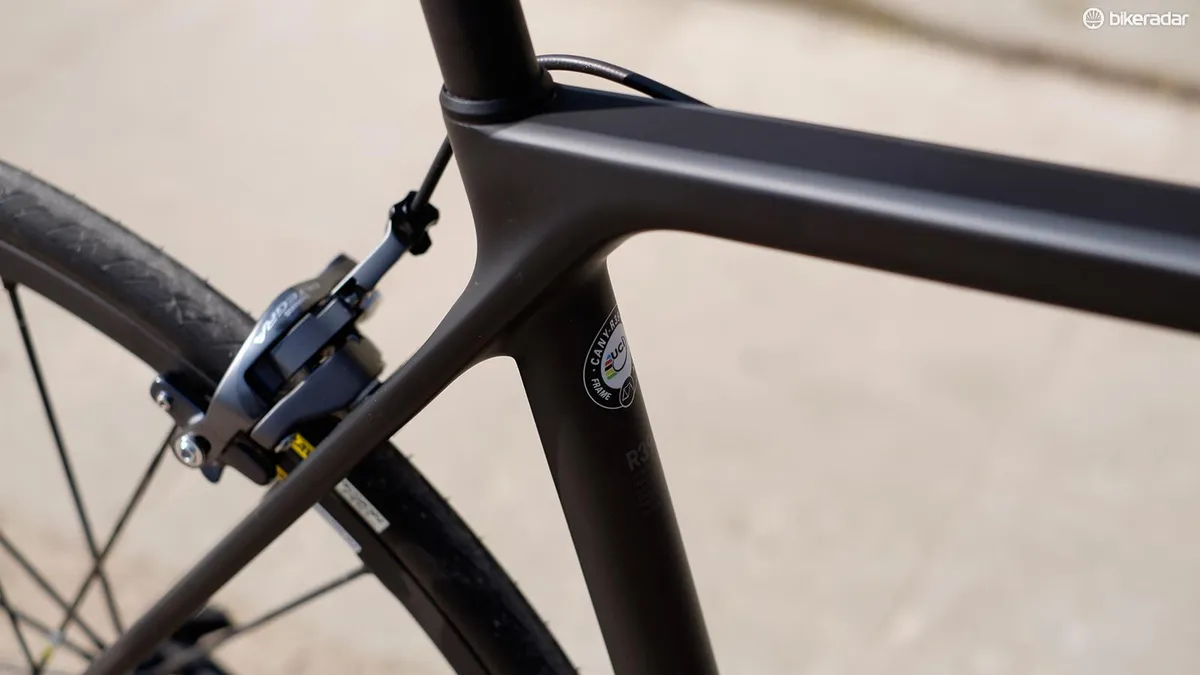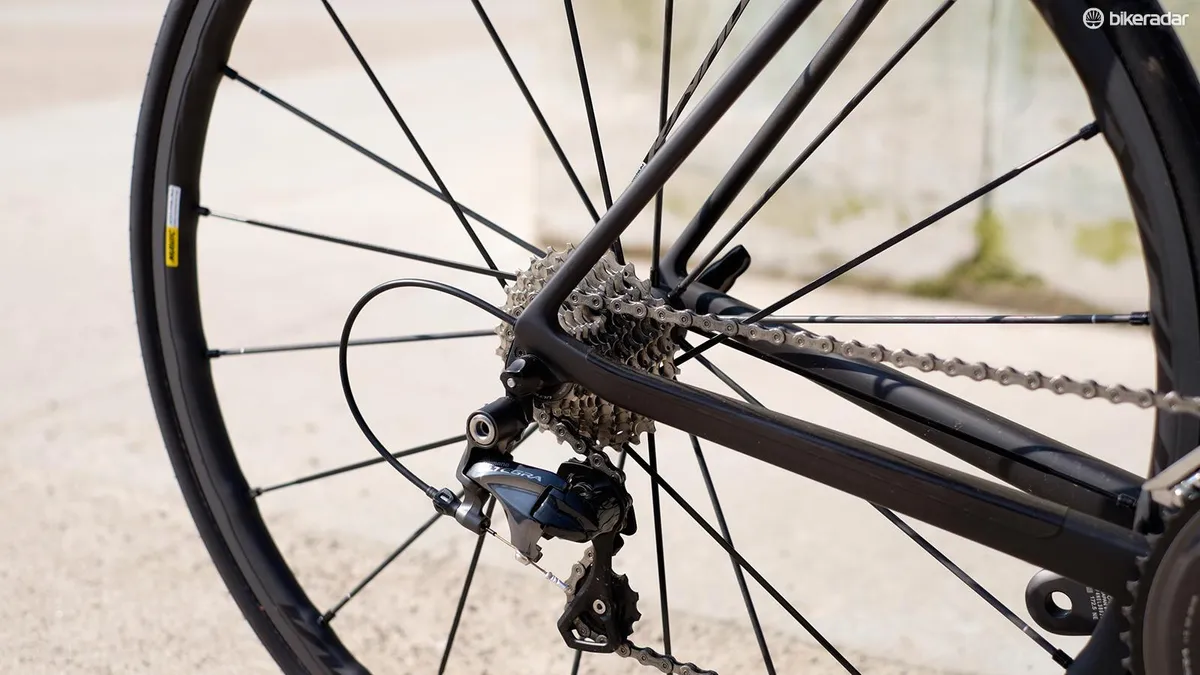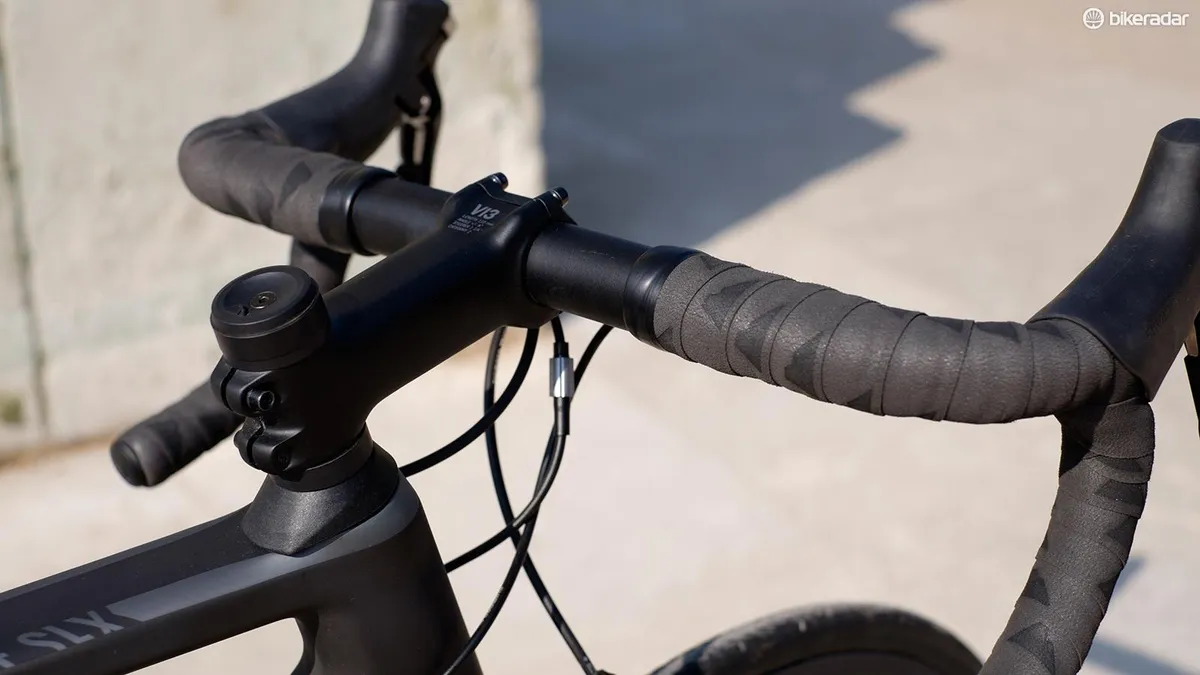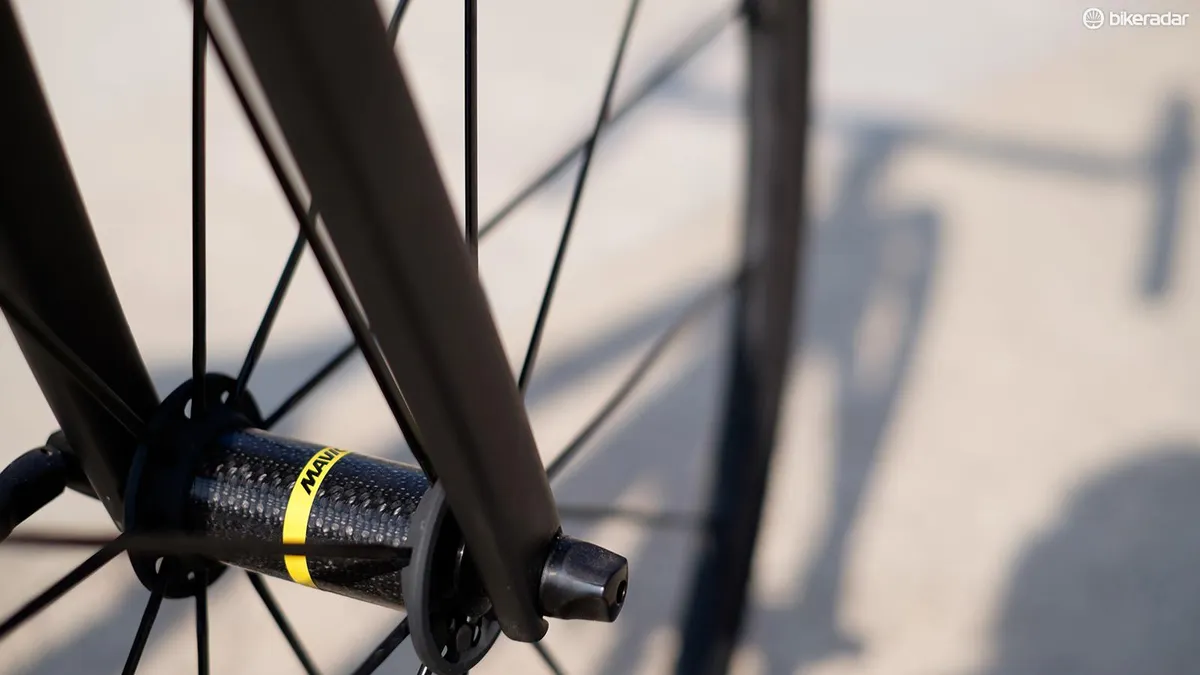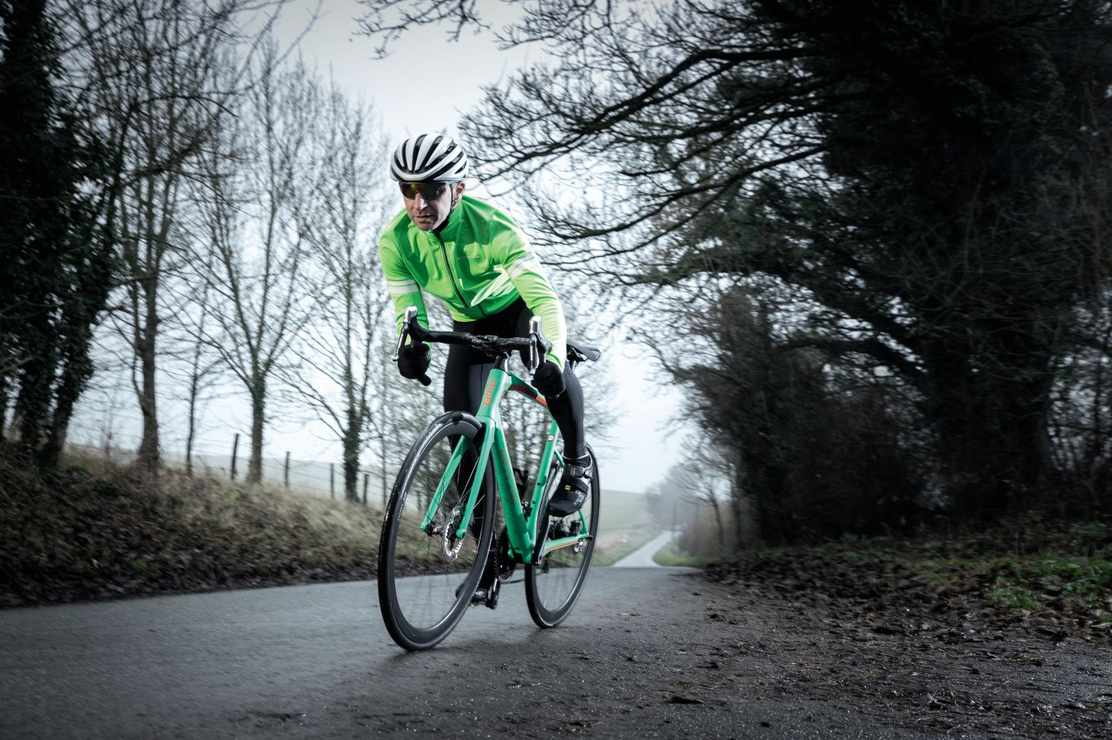Take a look at Canyon’s very comprehensive website, find the mechanical-shift Ultimate CF SLX frameset, and compare its price to that of this complete bike, which formed part of the longlist for our sister title Cycling Plus's Bike of the Year 2016 awards.
It doesn’t take a scientist to work out that there’s some serious cost-cutting going on somewhere in order to offer such high spec for so little extra. Welcome to the realms of direct retailing – a place you’ll ultimately need to visit for assistance with your Ultimate.
Race pedigree
Regardless, this is an incredibly popular bike, helped no doubt due its use as the Movistar WorldTour team’s all-round race weapon of choice. Although the frame profile has familiar looks, closer inspection reveals a fairly square down tube with a rounded leading edge that blends in to a slab-sided but slim head tube above the Kamm-tail-profiled fork legs.
Related: Canyon Ultimate CF SLX – first ride
The chainstays are hugely asymmetric, the non-driveside one being almost as wide as it is deep, and the slim, widely spaced seatstays cross the seat tube, creating a large junction with the flat, wide top tube.
Deep within the rear of the top tube is the seatpost clamp, and there’s also a seat tube cutout, although there’s heaps of clearance anyway, even with the 25mm rubber fitted. Its grey on charcoal and black finish is as stealthy looking as they come, and the frameset has a 120kg total weight limit plus a six-year guarantee.
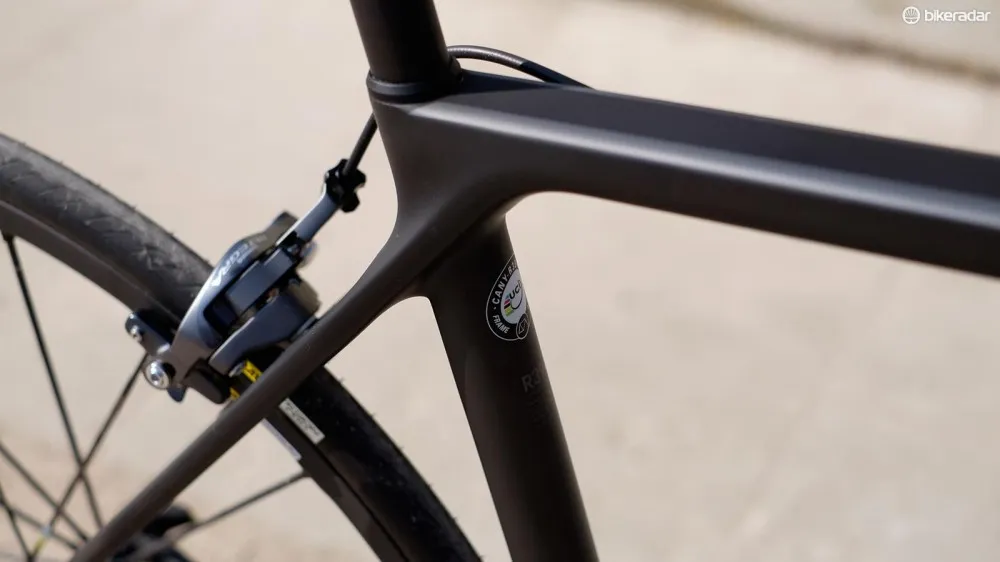
The slim, widely spaced seatstays flow all the way into the flat, wide top tube
We tested a medium-framed example, which equated well to a traditional 56cm, with its 155mm head tube with sculpted aero headset cover above giving the racer plenty of tuck potential. The 73.25 degree head angle and 73.5 degree seat angle are slightly steeper than some, and typically German, whereas the 410mm chainstays are a little longer, and the overall wheelbase snappily short at 988mm.
What this creates is a bike that changes direction in a flash, with a front end that’s always quite active. It’s perfectly stable at all speeds, but livelier than most.
Hardcore German-engineered carbon frames developed a reputation for being, well, hardcore, and riding like a jack hammer. Thankfully, despite concerns to the contrary, this Ultimate is a plush ride, almost disarmingly so.
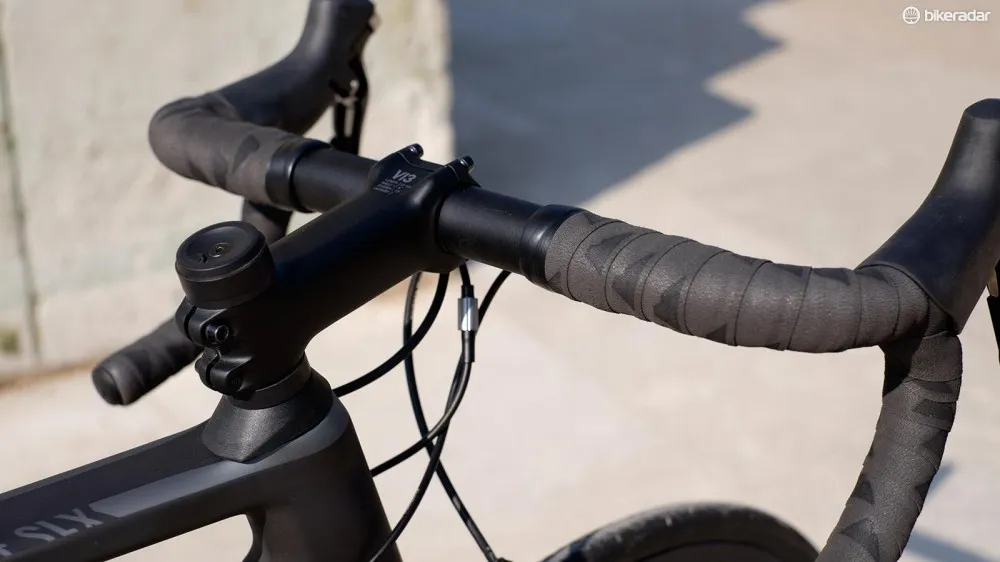
Canyon’s own ergonomic bar and square-profiled stem performed well during testing
That’s all the more impressive when considering the wheelset fitted. Mavic’s Ksyrium Pro Exalith SL wheels are often lusted over thanks to their combination of tubular carbon and broad alloy-bladed spokes, carbon front hub body and Exalith braking track. They’re light, stiff and uncompromising, certain to excite riders of a speedy disposition.
Even with Mavic’s own 25mm rubber fitted, the cosseting feel in the saddle was impressive. But looking down and watching the exposed 27.2mm carbon VCLS seatpost swaying in tune to our pedalling action served to partly explain the seated comfort. That said, the front end does a decent job of isolating you from road vibrations too, Canyon’s own ergonomic bar and square-profiled stem performing well throughout.
Shimano’s complete Ultegra groupset serves up its usual slick-shifting display, and the 52/36 chain rings with 11-28 sprockets at the back are spot-on for this bike’s intended market. The grey anodised finish of the components and wheels only add to the Ultimate’s impression of purpose.
Wheelset woes
There are no two ways about it, this bike is fast. Whether standing up or seated, the frame reacts instantly to efforts, and speed rises, no matter if it’s on a climb or flat road. But one thing almost every acceleration shared was a buzzing noise from the rear wheel.
Mavic’s Exalith braking surface is hardened and textured, designed to give elevated braking performance in all conditions and to resist wear. In our experience, it definitely stops quickly, but rarely without shrieking while doing so.
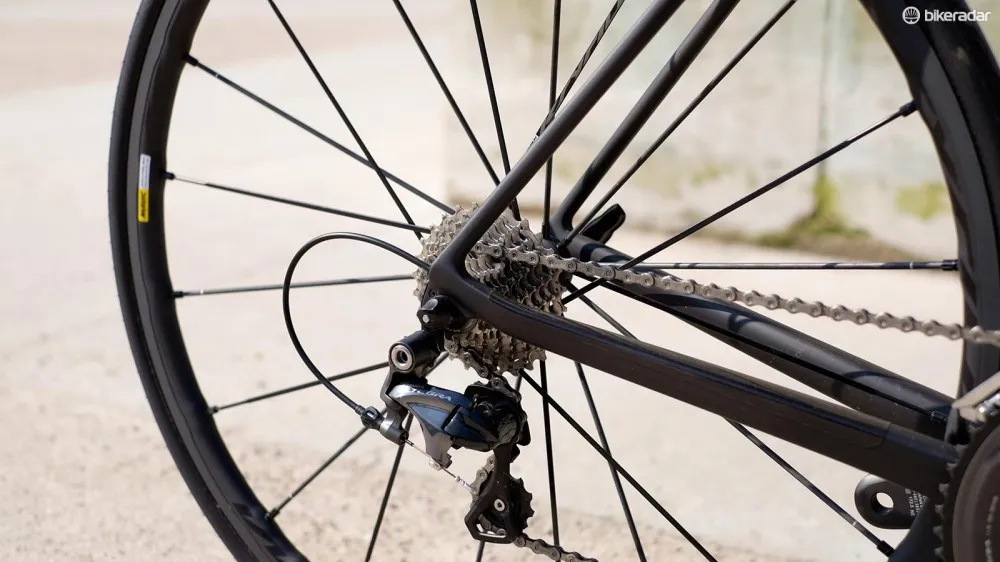
The Mavic rear wheel provided us with an annoying quantity of brake noise
With the brakes set as usual, the pads seemed to contact the rim and compress slighty, but then need more pressure to start slowing the wheel, and it’s in this phase that the noise is generated. It’s often such a sharp noise that our reflex reaction is to back off the brake pressure, which can be unwise.
The other issue we found was the wheel deflecting sufficiently to rub on the pads while riding uphill at average intensity, which was a surprise. We opened the calipers up further to prevent it, but it didn’t stop the braking noises.
Previous experience has taught us that the Exalith surface is very resilient to wear, but consequently eats brake pads. Going back to our opening comment on frame cost, another large share of the outlay on this bike will be swallowed by the wheelset, and as good as they look, putting up with some more than mild annoyances while only getting 20mm wide rims seems a false economy to us.
As a way to cover ground in a hurry and with a high level of comfort for a race bike, the Ultimate is impressive, and its package price more impressive still. Its ability to climb like a goat, descend like a stone and rail corners is a match for many, but in this instance the wheel selection holds it back from an even higher score, as it doesn’t enhance the ride, nor inspire confidence when braking is critical.
Bike of the year 2016: top three road bikes from £2,000 to £2,750
